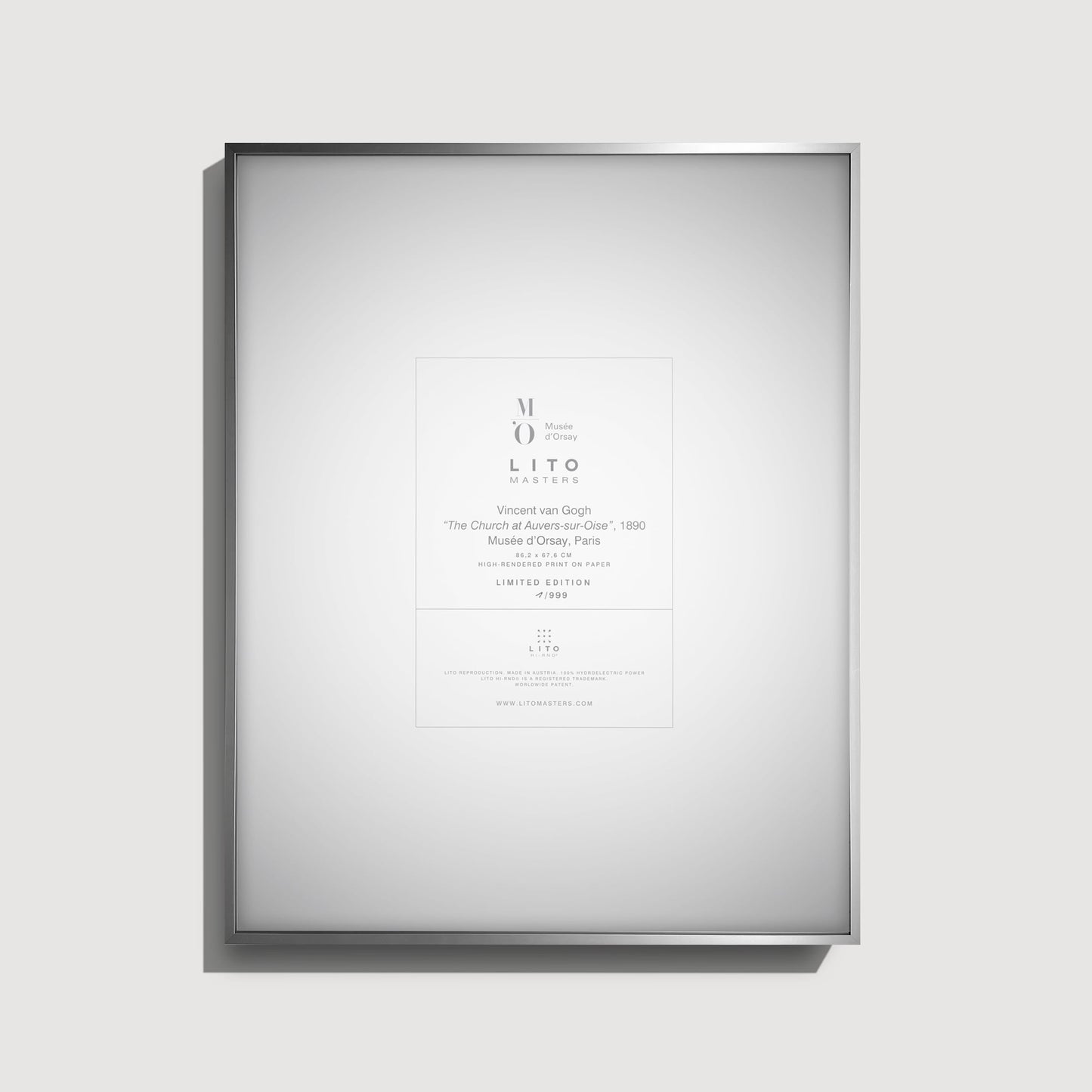About the artwork
In The Church at Auvers-sur-Oise, Vincent van Gogh transforms a simple village church into a scene of emotional intensity and vibrant, shifting energy. The building’s distorted contours, deep blues, and contrasting sunlit path embody Van Gogh’s late-period style, where architecture becomes a reflection of inner turmoil, spiritual searching, and the tension between shadow and illumination. The swirling brushwork and heightened colour create a composition that feels both alive and profoundly expressive.
This LITO Masters edition is reproduced from ultra-high-definition museum scans using our patented process, faithfully capturing the original colour nuances, brushwork texture, and subtle surface relief.
The saturated blues, dynamic strokes, and nuanced transitions of Van Gogh’s composition are rendered with exceptional fidelity.
Validated by the museum and released in a strict limited edition, each print is individually numbered and accompanied by a certificate of authenticity.
Evocative, intense, and unmistakably Van Gogh, The Church at Auvers-sur-Oise brings a sense of emotional depth and painterly vitality to any interior.
Available with your choice of framing option, using premium, archival materials for long-lasting preservation.






















